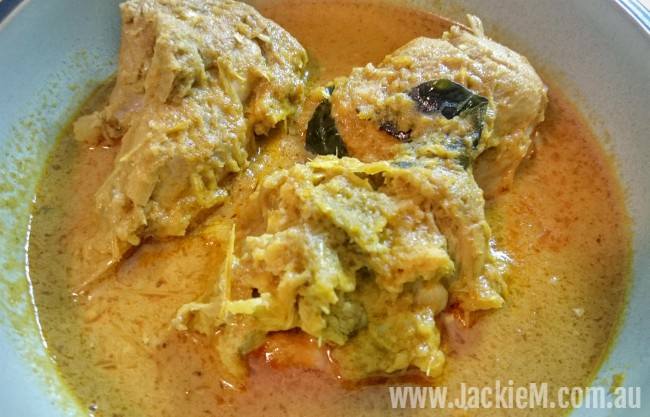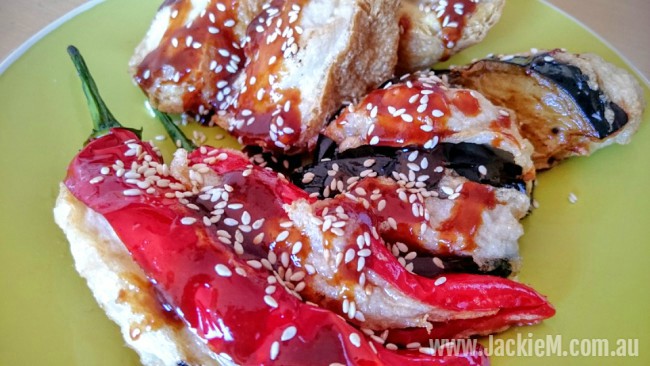How to Make Coconut Milk
When I was studying at Sydney University, I used to work at the iconic Lee’s Malaysian Takeaway at Wynyard station.
Their laksa was delicious and quite famous, but it used fresh milk instead of coconut milk. My boss told me that was because when they first opened their eatery you couldn’t get coconut milk in this part of the world.
(In a role reversal, fresh milk was not readily available in Malaysia when I was growing up; now that it is, using fresh milk has become a “thing” and a selling point with some versions of laksa there.)
Fast forward a couple of decades and coconut milk is now found in supermarkets everywhere – even in Malaysia the use of packet and canned coconut milk/cream is commonplace.
Preamble out of the way, I’m going to go into a more involved explanation of coconut milk than what my accompanying video would necessitate (you would think) but it does lead to a point I want to make.
Watch on YouTube >> https://www.youtube.com/watch?v=0-Zz7gPTeKw
Back in my day (I sound like an old timer) growing up in Malaysia, to get coconut milk you had to buy fresh grated coconut at the wet market and then extract coconut milk from it yourself.
This is how you would do it –
First you squeeze the grated coconut without adding any extra liquid to it – this yields a rich and creamy coconut milk – and is referred to in recipes as, well, thick coconut milk. You might get about 200ml of thick, creamy coconut milk from a large, mature coconut.
Then you add some water to the same batch of shredded coconut and extract a thinner coconut milk from it.
When you use it in your curries, you add the thin milk first, and the thicker milk later (I guess because the thick milk can separate because of the higher fat content, though I personally never worry about that).
Recipes would call for either thick or thin or both types of coconut milk – and we all knew exactly what that meant.
When I first came to Australia you couldn’t buy fresh grated coconut, but canned coconut milk and coconut cream were by that stage fairly accessible.
I drew correlations between “coconut cream” and “thick coconut milk” and “coconut milk” with “thin coconut milk” and used them as such in my cooking. They’re not exact matches for the fresh varieties (this may have something to do with the manufacturing process and the addition of stabilizers etc. in the canned products) but they are roughly about right.
Fast forward a couple of decades and if you now google coconut cream, you will find a number of blogs out there that explain that coconut cream is the thick layer of semi-solid coconut that settles if you let a (fresh) glass of coconut milk sit for awhile.
I’m going to go out on a limb and suggest that these bloggers are either superimposing their own understanding of how dairy cream is yielded, onto these coconut derivatives, or drawing their information from sources that don’t originate from the Southeast Asian cooking realm.
As a Malaysian who grew up with coconut milk as an essential cooking ingredient, there was no recipe or technique I’m aware of that taught you to make coconut cream by letting coconut milk settle and skimming the thick layer off the top. It’s always been thick coconut milk (ie. cream) = fresh grated coconut squeezed without additional water.
We didn’t call it coconut cream but I’m guessing it was a marketing/branding decision when canned coconut cream first made its way into the market. The manufacturers’ own definitions confirm my understanding – ie. the difference between coconut cream and coconut milk is that the former is extracted with less water content – it has about 20% less liquid in it. No mention about it being a semi-solid substance skimmed off the top of coconut milk that has settled.
Some other points –
Creamed coconut is different from coconut cream – the former is coconut flesh that’s been ground to a paste and sold in waxy, solid blocks. This is what you make kerisik out of (and not desiccated coconut – another common misconception).
Coconut juice/coconut water is the drink you get from young, green coconuts; coconut milk/cream etc. is obtained from mature, brown coconuts with husks.

I’ve heard of people trying to make coconut milk from the coconut flesh in young green coconuts – it won’t work. Similarly, you don’t drink the juice from mature brown coconuts – it’s not palatable.
There are other ways to make your own coconut milk – you can use frozen shredded coconut, or extract the flesh from a mature coconut and blend it with water, and squeeze it through a cheesecloth.
In this video I suggested using 1L of water to the 500g pack of desiccated coconut. That yielded a thin coconut milk; you can play around with the water:coconut ratio to achieve the desired consistency.
My past Hangout-on-Air on How to Prepare and Use Coconut, with my crew member Shae Marshall-Rae >>
Click to watch on YouTube >> https://www.youtube.com/watch?v=eXYrcrL18Us







